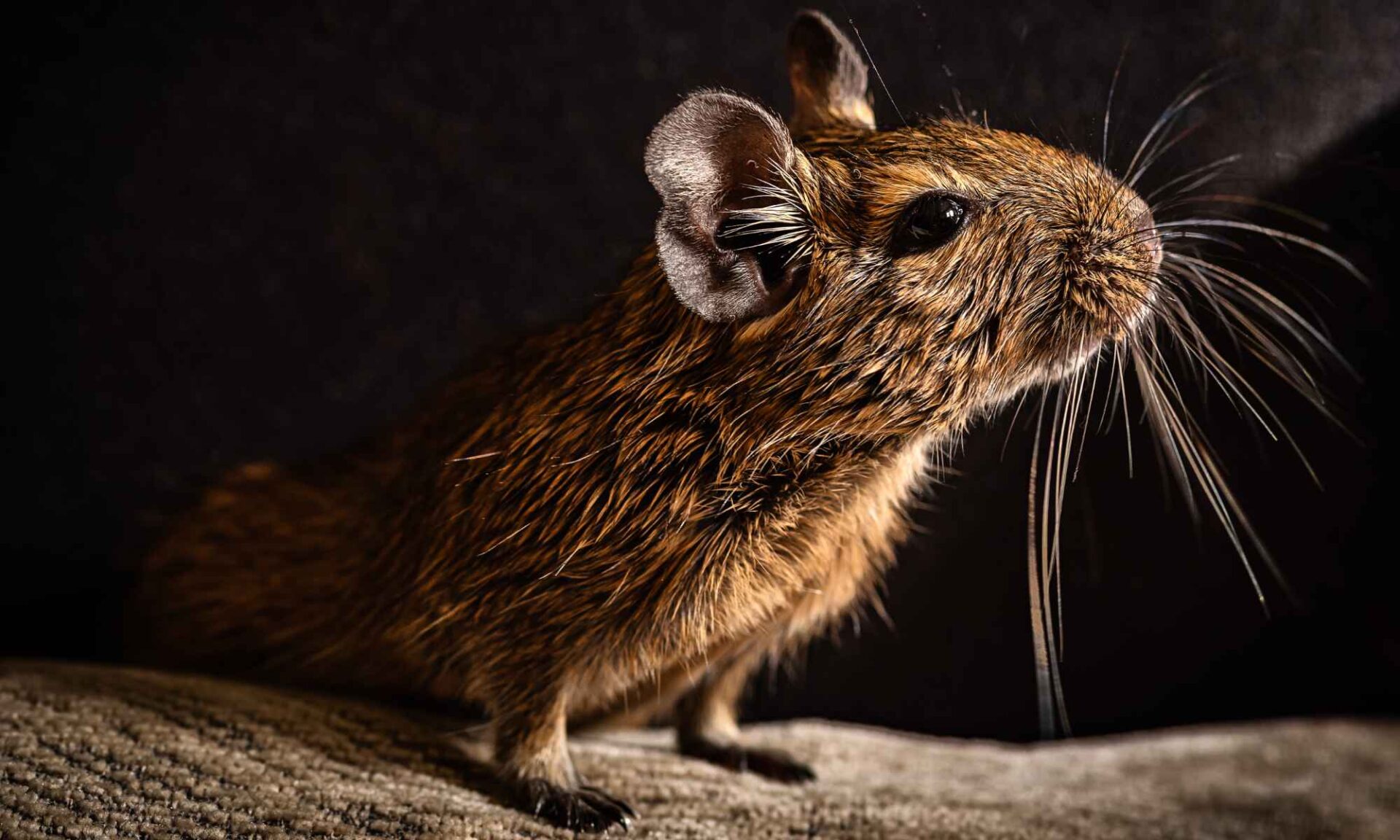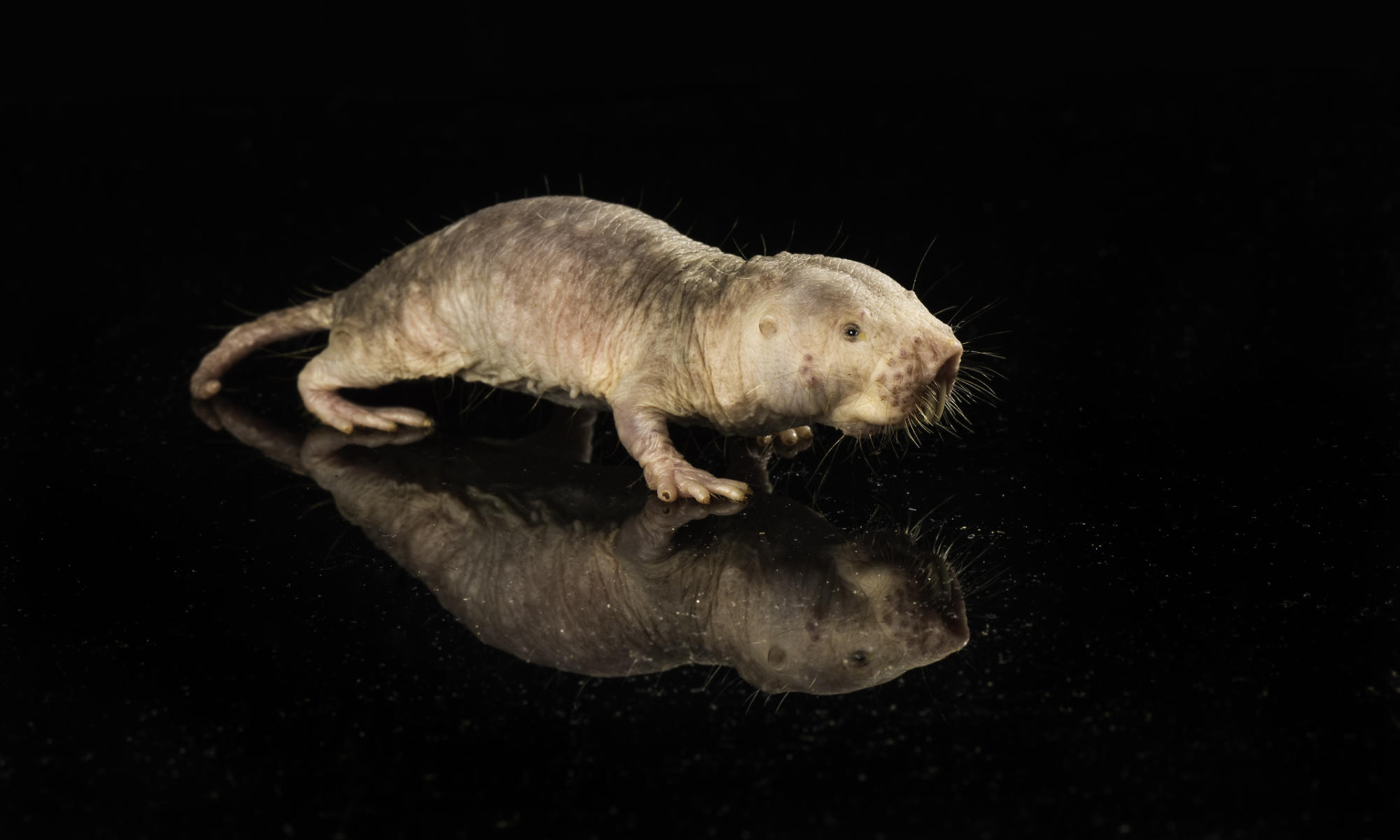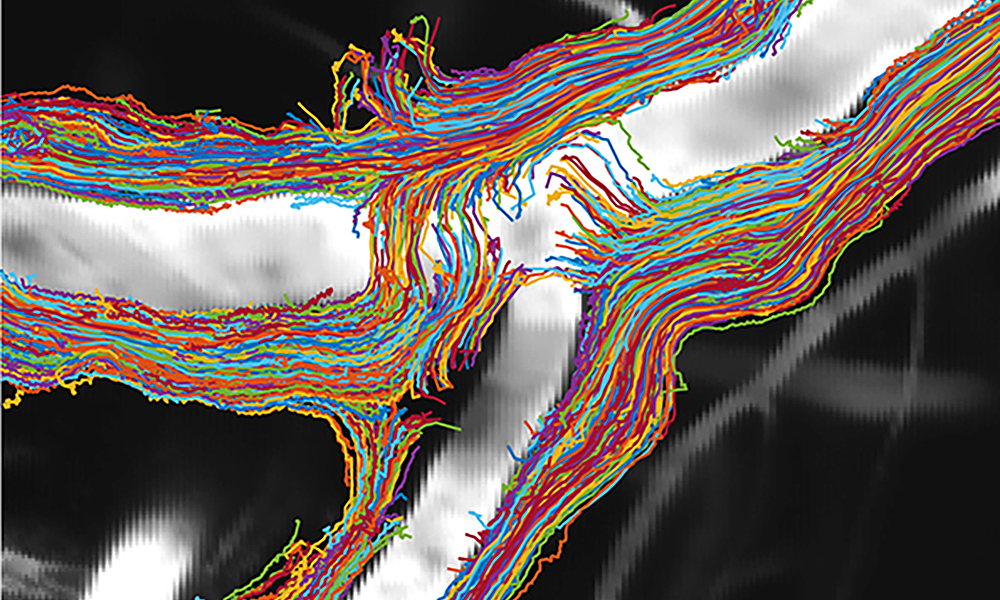A new grant partners longevity researchers and Alzheimer’s experts at Rochester to study the gene mechanisms that contribute to long and healthy lifespans.
Whether you give a mouse a cookie, as the book title goes, or kale leaves, or hot-stone massages, they will not live longer than two to three years. But other mammals, like naked mole rats and bowhead whales, can live much longer—and perhaps can teach us to follow suit.
At the University of Rochester, a new collaboration between leading longevity researchers and brain disease experts examines gene mechanisms responsible for long life, drawing on the latest findings to pursue novel interventions for the treatment and prevention of Alzheimer’s disease and related dementias.
Today’s oldest naked mole rats, born during the Reagan administration, show exceptional resistance to age-related disease. Meanwhile, when degus (small Chilean rodents) develop Alzheimer’s disease, it progresses in a remarkably similar manner to humans. Examining the genes of these mammals has the potential to yield insights into how humans can live longer—with their cognitive faculties intact.
“No matter how much you pamper a mouse, it will not live to 40 years as naked mole rats will,” says Vera Gorbunova, the Doris Johns Cherry Professor in the departments of biology and of medicine. To bridge the knowledge gap from rodents, whales, and other long-lived mammals to humans, Gorbunova tapped M. Kerry O’Banion, a professor of neuroscience at the University of Rochester Medical Center, who has studied the pathogenesis of Alzheimer’s disease for 30 years.

Recognizing the research potential of this partnership, the National Institute on Aging (NIA), part of the National Institutes of Health, recently awarded Gorbunova, O’Banion, and their team of researchers a five-year grant of $18.5 million to study the comparative genomics of longevity and Alzheimer’s disease. The grant, which is headed by Gorbunova, also includes Rochester faculty members Andrei Seluanov and Hongbo Liu, along with colleagues at Harvard University, Einstein College of Medicine, Washington University, and Mount Sinai’s Icahn School of Medicine.
Aging, Alzheimer’s, and anti-inflammation
Last year, after decades of research, Gorbunova and Seluanov successfully transferred to mice a “longevity gene” they had identified in naked mole rats. This gene drives the production of a molecule called HMW-HA, which seems to play a role in cellular protection and repair. Compared to mice and humans, naked mole rats have about ten times more HMW-HA in their bodies. Mice with the longevity gene added showed improved overall health, a 4.4 percent increase in lifespan, and reduced inflammation.
“All disease associated with aging involves inflammation in multiple systems, including the brain,” O’Banion explains. “My expertise is studying inflammation’s role in Alzheimer’s, and their research into identifying inflammation pathways creates a natural cohesion between my work and Vera’s team.”
The partnership across campuses harnesses the University’s longstanding strengths in advancing understanding of the human brain and translating this knowledge into clinical breakthroughs for neurological disorders, including Alzheimer’s disease and paralysis. In addition, students working with researchers, including several in the MD/PhD program for medical scientist training, have the opportunity to advance findings with real-world impact for their parents and grandparents.

As an earlier outcome of their interactions, O’Banion and Gorbunova co-direct a training grant from NIA for graduate students in various disciplines—such as biology, neuroscience, and pharmacology/physiology—to explore the intersection of aging and Alzheimer’s disease.
“Each student in this grant-funded program brings their own perspectives, experiences, and ways of thinking to our common research goals,” O’Banion says.
O’Banion’s career at Rochester equals the lifespan of a naked mole rat—a professional longevity that suits him. “One reason I’ve stayed all this time at Rochester is the opportunity to pursue collaborations like these,” he says. “This grant exemplifies the genuine connectedness and transdisciplinary approach here: the questions people bring, the spirit with which they are welcomed, and the willingness to work together to solve them.”
The ‘thrill’ of discovery
“Although we focus on Alzheimer’s,” says Gorbunova, “the grant is broader than that. By diving into the genetics of degus and naked mole rats, we are striving to understand the basic biology of aging and disease.”
With shared interests in comparative biology, the researchers express hope for discovery science that extends human health spans.
“I am optimistic for the potential to find interventions that might benefit Alzheimer’s and dementia patients,” says O’Banion. “If we can slow down inflammation or DNA damage, by taking cues from mammals that seem to have tackled those problems, there may be specific mechanisms that become targets for therapeutic treatment. That is the thrill of endeavors like these: in the long stretches of science, finding something new and unexpected.”




